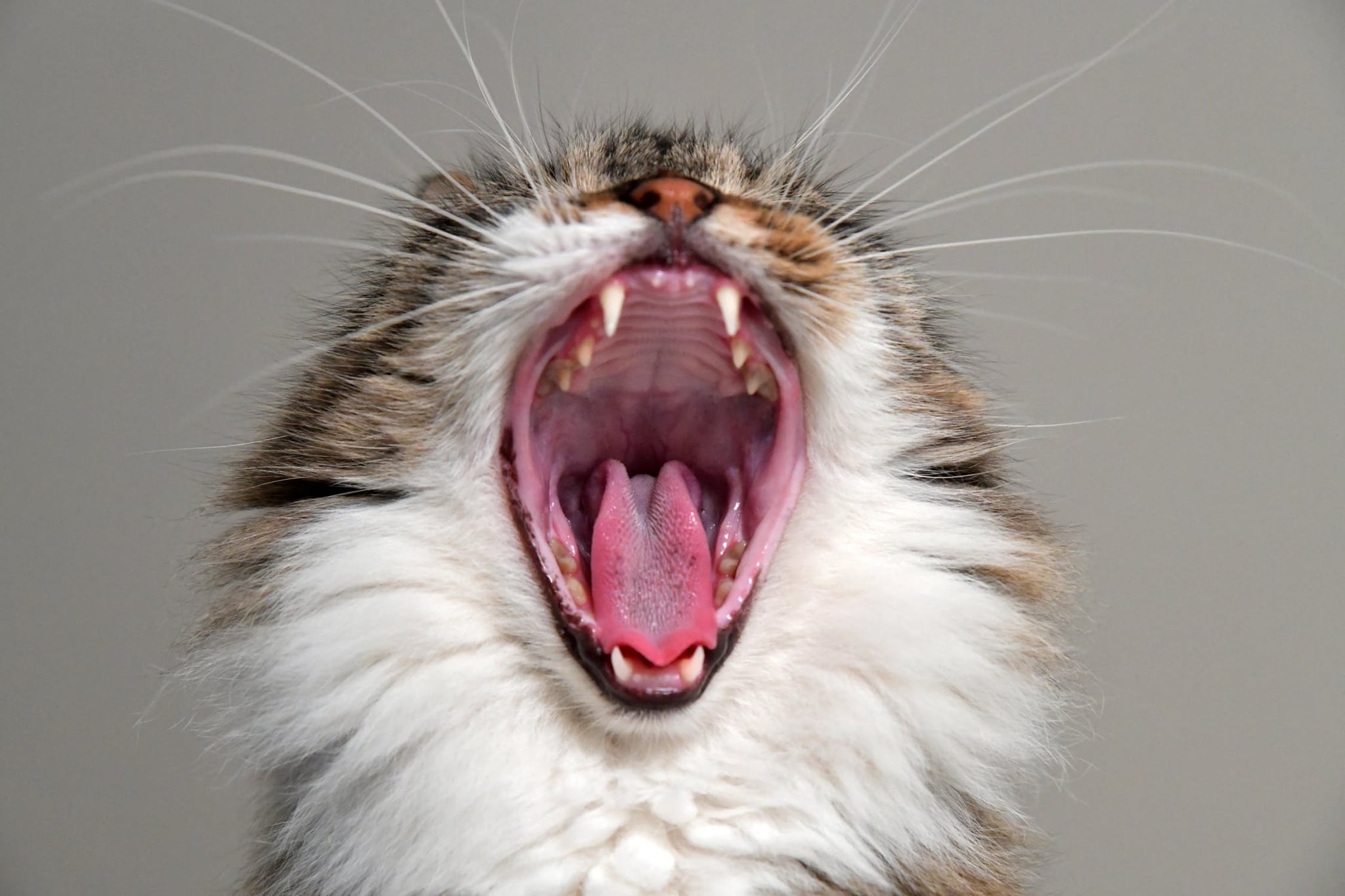
Fun fact: The colour of your sassy furball [1]'s gums can tell you many things about her health. That's why it's so important for pet owners [2] to monitor their cats' mouths. Your cat should have a light pink coloured gum line throughout the mouth, said Michelle Burch, DVM, veterinary writer and adviser at Catological [3]. Any other colour in your kitty's mouth [4] may indicate dental problems. In particular, red gums may signal your cat has a chronic disease of the mouth.
But what causes dental diseases in cats? And how are they treated? POPSUGAR turned to the experts to help us understand more about red gums in cats and ways to maintain cat dental health.
What Causes Red Gums in Cats?
If your cat's gums are red, she could have gingivitis (inflammation of the gums), Dr. Burch said. Gingivitis is most commonly caused by the accumulation of plaque, resulting in inflammation and irritation along the gumline. Plaque is the result of leftover food particles and bacteria that collect on the teeth, she said. Some common symptoms include bad breath and bleeding of the gums.
If left untreated, the bacteria along the tooth will then invade the bone and ligaments surrounding the root, causing gingivitis to progress to periodontal disease, Dr. Burch said. This buildup of plaque and continuous inflammation can result in pocketing next to the tooth root, loose teeth mobility, gum recession, and pain.
Cats with stomatitis (inflammation of the entire mouth) may also have red gums, Dr. Burch said. The cause of stomatitis is thought to be an immune response to the plaque on the teeth. Because of this, cats with feline leukemia or feline immunodeficiency virus tend to have a higher risk of stomatitis, she said. Besides redness and swelling along the gumline, signs of stomatitis include difficulty eating, weight loss, decreased grooming, and drooling.
What Can I Do to Treat My Cat's Red Gums?
Gingivitis and stomatitis are both initially diagnosed with an oral examination by your veterinarian, said Jessica Kirk, DVM, a veterinary writer for Vet Explains Pets [6]. If your veterinarian believes your cat may have periodontitis, X-rays of the teeth will be performed so that any potential damage below the gum line and inside the teeth can be seen.
Treatment for these dental diseases vary depending on the severity and cause of the disease, Dr. Kirk said. But routine dental cleanings are often done to remove plaque and dangerous bacteria buildup. Pain management, administering antibiotics or immunosuppressive drugs, and affected tooth extractions are other possible treatments, she said.
Thankfully, gingivitis, stomatitis, and some of the earlier stages of periodontitis are reversible, Dr. Kirk said. However, if periodontitis is not addressed promptly or treated appropriately, it can result in tooth loss.
How Can I Provide Proper Dental Care for My Cat?
Looking after your cat's teeth is extremely important. In addition to brushing your cat's teeth, Dr. Kirk recommends a licenced veterinarian performing routine dental cleanings at least once a year. Some cats may even require cleanings on a more regular basis depending on their oral health needs. There are also products, such as treats, feeds, and water additives, that may help to slow the rate of plaque and tartar buildup, Dr. Kirk said.
